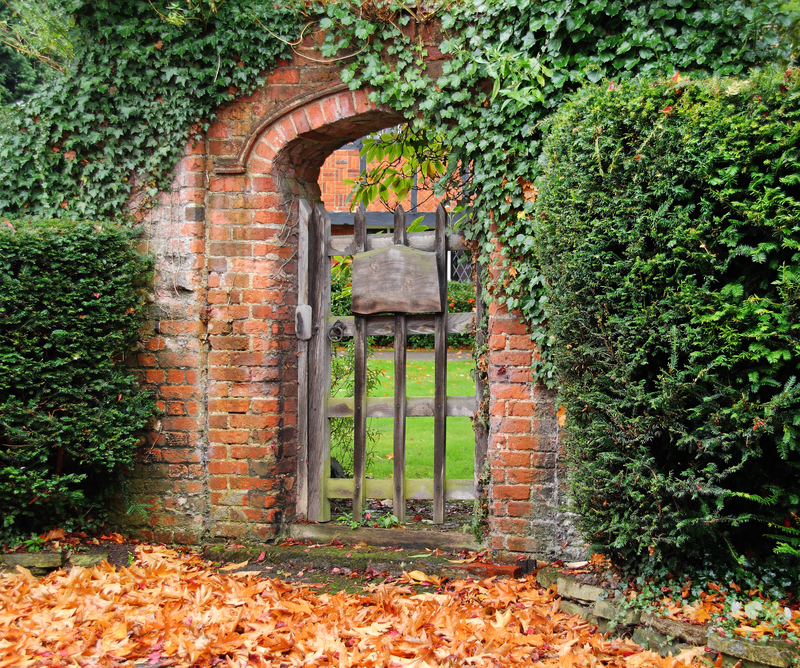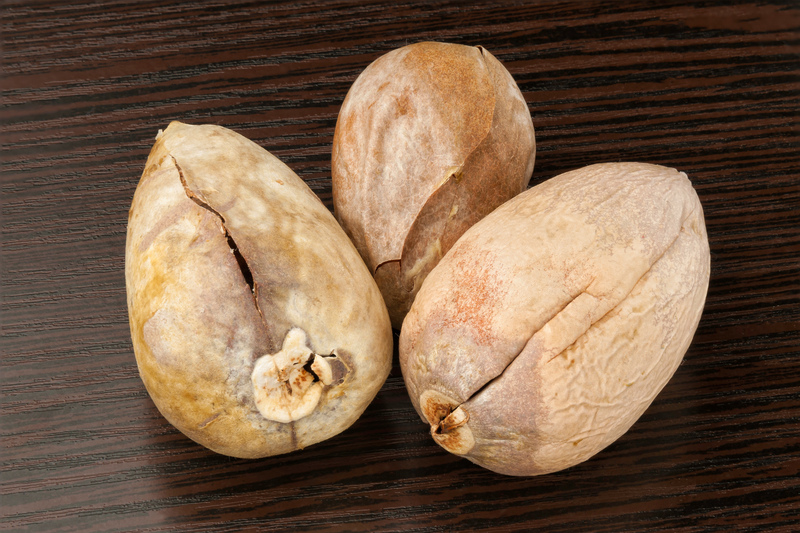Vital Gardening Tools Every Outdoor Aficionado Should Own
Posted on 05/06/2025
Vital Gardening Tools Every Outdoor Aficionado Should Own
If you love spending time outdoors and take pride in cultivating a thriving garden, equipping yourself with the right set of gardening tools is essential. The right tools not only make your work easier but also ensure your garden stays healthy and beautiful. This comprehensive guide explores the essential gardening tools every outdoor enthusiast should have, offering valuable information to help you choose, use, and maintain your vital gardening implements.
Why Gardening Tools Matter for Outdoor Enthusiasts
Gardening is more than just a hobby--it's a passion that combines artistry, patience, and knowledge. Whether you're planting vibrant flower beds, tending to a vegetable patch, or simply maintaining a lush lawn, using essential garden tools ensures productivity, efficiency, and safety. Quality implements streamline tough chores, protect your body from strain, and deliver better results, transforming gardening from a chore into a pure pleasure.
- Efficiency: The right tools help complete tasks quicker and with less effort.
- Precision: Specialized instruments enable fine details and careful pruning.
- Safety: Robust tools protect hands and posture, reducing risk of injury.
- Maintenance: Proper tools help keep your garden healthier and more manageable.

Top 10 Vital Gardening Tools Every Outdoor Aficionado Needs
While gardening toolkits can be vast, certain implements are indispensable for gardeners at every skill level. Below, discover the must-have tools for any outdoor gardening aficionado, with insights on their use and maintenance.
1. Trowel: The Handiest Hand Tool
The hand trowel is a cornerstone of any outdoor gardener's tool collection. Compact and versatile, this pointed tool is perfect for transplanting seedlings, digging small holes, harvesting root vegetables, and even weeding.
- Material: Opt for stainless steel blades for durability.
- Handle: Look for ergonomic grips to reduce wrist fatigue.
- Tip: Regularly clean and sharpen your trowel for optimal performance.
2. Pruning Shears: For Precision Cutting
Every outdoor garden enthusiast requires a reliable pair of pruning shears (secateurs). Designed for trimming stems, removing dead or damaged growth, and shaping shrubs, quality pruners will keep your plants healthy and tidy.
- Types: Bypass (for live plants) or Anvil (for dead branches).
- Comfort: Cushioned handles and safety locks are must-have features.
- Maintenance: Wipe blades clean after use to prevent rust.
3. Garden Gloves: Protecting Your Hands
Don't underestimate the importance of sturdy gardening gloves. They shield your hands from thorns, blisters, and soil-borne pathogens. Gloves also improve grip when handling wet or slippery tools.
- Material: Leather for heavy-duty work, cotton for light gardening, nitrile for dexterity and water resistance.
- Fit: Gloves should be snug but not tight, allowing for full range of motion.
4. Spade: The Workhorse for Digging
A high-quality spade is vital for any serious gardener. Its flat, sharp blade penetrates soil effortlessly, aiding in digging, edging, transplanting, and dividing plants.
- Size: Choose a size appropriate for your height to avoid back strain.
- Material: Stainless steel or carbon steel for strength and rust resistance.
- Handle: Ash or hardwood handles offer strength and resilience.
5. Garden Fork: For Aeration and Turning
The garden fork is ideal for breaking up compacted soil, aerating ground, turning compost, and removing weeds. Its sturdy tines penetrate soil without slicing through plant roots.
- Types: Digging forks for soil, border forks for tighter spaces, and compost forks for turning organic material.
- Tip: Ensure tines are forged (not welded) for longevity.
6. Watering Can or Hose: Hydrating Your Greenery
Effective watering can make or break your garden. A sturdy watering can with a detachable rose head allows for gentle watering of seedlings. For larger areas, a hose with adjustable spray nozzles facilitates precise and efficient irrigation.
- Capacity: Choose a can size you can comfortably carry when full.
- Material: Galvanized steel cans are durable; plastic is lightweight but less eco-friendly.
- Hose Options: Expandable hoses save space, while rubber hoses are strong and flexible.
7. Rake: Tidying and Soil Preparation
Rakes are essential gardening tools for clearing debris, preparing soil beds, and spreading mulch. Leaf rakes are perfect for collecting fallen foliage, while garden rakes even out soil and break up clumps.
- Leaf Rake: Flexible tines gather leaves and lightweight debris.
- Garden Rake: Rigid tines break up soil and spread materials.
- Ergonomics: Long handles reduce back strain; padded grips enhance comfort.
8. Hoe: Weeding and Cultivating
Hoes are invaluable for outdoor gardening aficionados tackling weeds and cultivating soil. A sharp blade allows you to swiftly dislodge weeds and create furrows for planting seeds.
- Draw Hoe: For general weeding and soil shaping.
- Swoe Hoe: For slicing beneath the soil surface.
- Tip: Maintain a sharp edge for clean cuts and easier use.
9. Wheelbarrow or Garden Cart: Heavy Lifting Made Easy
A wheelbarrow or garden cart is crucial for moving soil, mulch, compost, pots, or harvested crops around the garden. They come in various sizes and material choices to fit your gardening needs.
- Material: Steel trays for heavy-duty tasks, polypropylene for ease and rust resistance.
- Wheels: Pneumatic tires are easier to maneuver over rough terrain.
- Maintenance: Keep tires inflated and oil moving parts for longevity.
10. Loppers or Hedge Shears: Shaping Large Growth
When tackling thick branches or shaping hedges, loppers and hedge shears are must-haves. Loppers extend your reach and multiply your cutting power, while hedge shears ensure uniformity and neatness.
- Blades: Hardened steel stays sharp longer.
- Handles: Telescopic handles provide extra reach for tall hedges.
- Tip: Keep blades clean and lubricated to prevent sap buildup.
Other Handy Tools for Outdoor Garden Lovers
Beyond the classics, consider these additional vital tools for gardening enthusiasts to add to your shed:
- Soil knife or Hori Hori: A Japanese multi-purpose tool that digs, weeds, and slices through roots.
- Plant labels and markers: Keep track of varieties and planting dates for better organization.
- Kneeling pad or garden stool: Protect your knees and back during extended planting sessions.
- Soil pH and moisture tester: Monitor your soil's health for optimal plant growth.
- Sprayer: Easily apply pesticides or foliar feeds.
- Twine and plant ties: Train and support tall or climbing plants.
Choosing Quality Gardening Equipment: What to Look For?
Durability and Material
Investing in high-quality, durable gardening gear pays dividends in the long run. Tools constructed from stainless steel, carbon steel, or fiberglass outlast cheaper alternatives and provide consistent performance season after season. Handles made from ash, hickory, or bamboo offer natural shock absorption and exceptional strength.
Ergonomics and Comfort
Gardening should be enjoyable, not painful! Look for tools with soft-grip handles and ergonomic designs. Well-balanced implements reduce fatigue and minimize repetitive strain injuries.
Maintenance and Storage
Keep your tools in top shape with regular cleaning, oiling, and occasional sharpening. Store them in a dry and secure shed or toolbox. Hang tools with long handles to prevent warping, and keep sharp edges covered for safety.
Budget Considerations
While it may be tempting to opt for budget buys, remember that quality tools often come with warranties and last for years, while cheaper versions may need replacement seasonally. Prioritize purchases based on your most frequent gardening tasks and upgrade over time.
Maintaining Your Essential Gardening Tools
Proper care of your outdoor gardening equipment ensures longevity and top-tier performance. Follow these steps to maintain your gear:
- Clean tools after each use: Scrape off dirt and wash with water; dry thoroughly to avoid rust.
- Sharpen blades regularly: Use a sharpening stone or file, especially for shears, spades, and knives.
- Oil moving parts: Lubricate with light machine oil to prevent corrosion and sticking.
- Inspect wooden handles: Sand splinters and treat with linseed oil to prevent cracking.
- Store properly: Hang up or place the tools in a dry location away from the weather.

Tips for Safe and Effective Gardening Tool Use
Safety is paramount for every outdoor gardening aficionado. Cuts, blisters, and strain can easily mar an otherwise joyful morning in the yard. Use the following best practices for optimal tool usage:
- Wear gloves for every task, especially when handling soil, chemicals, or sharp blades.
- Check for loose parts and tighten screws or connections before use.
- Use tools for their intended purpose--never pry with pruners or dig with a hoe.
- Lift with your legs--not your back--when using wheelbarrows or heavy equipment.
- Keep children and pets away from sharp tools and garden machinery.
Conclusion: Invest in Your Garden, Invest in Quality Tools
Being an outdoor gardening enthusiast means more than just loving plants--it means taking pride in your work and respecting the craft. By choosing and caring for the vital gardening tools every outdoor aficionado should own, you empower yourself to achieve a lush, productive, and beautiful garden with ease and satisfaction.
Whether you're a seasoned landscaper or a backyard beginner, equipping yourself with the right gear sets you up for success, safety, and sheer joy every time you step into your green oasis. Remember, invest in quality, prioritize comfort, and treat your tools with care--they're your partners in nurturing nature and enjoying the outdoors to its fullest!


